NYC’s Giant Water Tunnel Begins Work On Final Shafts, Following 50 Years Of Construction
April 22, 2021, 8:46 a.m.
The completion of City Tunnel. No. 3 would help alleviate strain from droughts and the coming climate emergency, but it has cost decades of human toil.
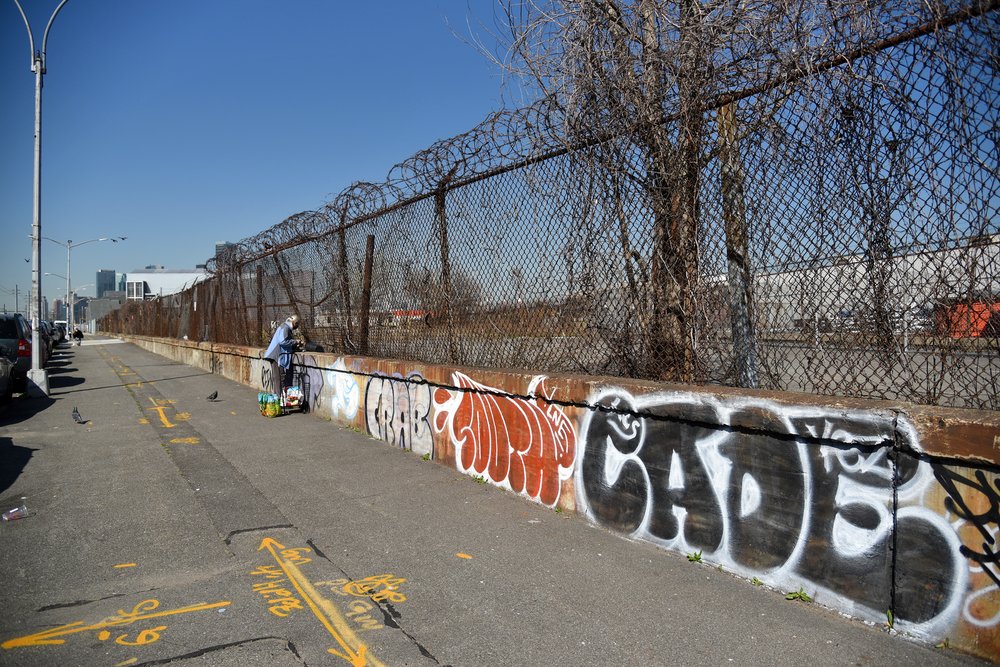
Out on the industrial back streets of Queens sit two dusty, gravel-covered lots. Hemmed in by auto-body shops, graffiti-covered walls and barbed wire fences, one houses an abandoned trailer and a collection of car doors, while the other is home to three feral cats: Rosie, Blackie and Angel.
Here is where the final phase of a 50-year long journey to create a backup for the city’s water supply will soon break ground, with workers blasting out two enormous shafts, burrowing down more than 600 feet.
The shafts will connect the surrounding communities to City Tunnel No. 3, a 60-mile water delivery system that the city has been building since 1970. They will also allow the city to shut down and repair City Tunnel No. 2 for the first time in 85 years. Overseen by the Department of Environmental Protection (DEP), Tunnel No. 3 is the largest capital project in New York City’s history, costing more than $6 billion.
While numerous journalists and politicians visited the subterranean network in past decades, its most recent progress has been shrouded in mystery, due in part to security concerns. According to the DEP, members of the press are no longer allowed to see any portion of the tunnel, its shafts or its valve chambers. The agency even goes as far as restricting who can republish their archival photos of the city’s water tunnels.
These precautions stem from the high stakes associated with delivering 981 million gallons of water per day to New York City residents. This water reaches the city through a complicated network of aqueducts and water tunnels, flowing downhill from 19 separate reservoirs spread across a 2,000-square-mile watershed.
Parts of this infrastructure are more than a century old. A major motivation for constructing Tunnel No. 3 is that the city has not been able to shut down and inspect City Tunnel No. 1 or City Tunnel No. 2 since they were put into operation in 1917 and 1936, respectively. If either of these earlier tunnels had failed before the city finished No. 3, it would have been catastrophic, leaving millions of residents and businesses without ample water.

While the Manhattan sections of City Tunnel No. 3 began delivering water in 1998 and 2013, the 11.3-mile-long stretch underneath Queens and Brooklyn has not yet been fully activated despite being finished in 2001. Five years ago, after The New York Times reported the third tunnel had experienced a funding delay, Mayor Bill de Blasio pledged to wrap up the project by 2020. The mayor later said it would be fully operational by 2025, according to Politico New York. The construction of Shafts 17B-1 and 18B-1, along quiet blocks in Maspeth and Long Island City, represents the last two pieces needed for the Brooklyn and Queens leg to fully deliver the underground water to the people.
These last two shafts are now expected to be done by 2026, according to the DEP, but the tunnel still won’t be complete. The original plans called for one more extension—a 14-mile conduit between Yonkers, the Bronx and Queens. All of these redundant passages—including the original tunnels—mean that the city can pull from various reservoirs even if one tunnel fails.
All the while, the climate crisis continues to stress the city’s aging water system. Along with infrastructure failures, droughts are considered to be one of the biggest hazards facing New York City’s water supply, according to a 2014 report from NYC Emergency Management. As temperatures around the region continue to soar, the city will increasingly see hot days, heatwaves, hotter summers and a higher likelihood of droughts. In 2009, the New York City Panel on Climate Change warned that the frequency of droughts hitting its watershed might double by the 2050s. If these intense weather events become five times more frequent by the 2080s, as predicted, they could drain the city’s reservoirs.
The completion of City Tunnel. No. 3 would help alleviate this coming climate emergency, but it has cost decades of human toil. Several generations of workers from the Bronx’s Laborers' Local Union No. 147—whose members are nicknamed the Sandhogs—have gone underground to carve out the tunnel’s various sections. At least 24 workers have lost their lives while constructing the project.
“We build stuff that lasts a hundred years, especially the tunnel workers,” said Richard T. Fitzsimmons, the business manager of Local No. 147. Their half-century of sacrifice is a sampling of what humanity must invest in its infrastructure as we fail to adequately curb carbon emissions.
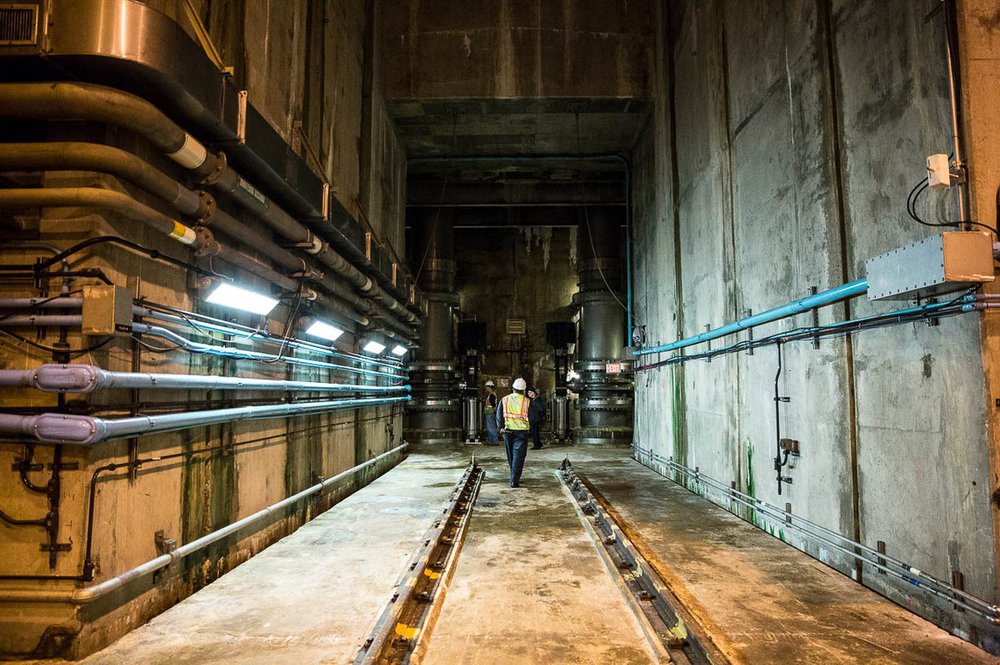
“Brooklyn Is Brutal”
In February, New York City announced it had awarded the contract for the two Queens shafts to the Walsh Construction Company. Preparations are now underway to begin freezing the ground for this $355 million project, a step required to excavate down to a safe depth for blasting with dynamite. Fitzsimmons expects that work will begin on Shafts 17B-1 and 18B-1 this July.
“Once the ground is frozen, we can go in and excavate the top layer, the ‘soft ground’ we call it, say 40 or 60 feet. And then we get into the rock and the dynamite,” said Fitzsimmons. “Down about 100 feet, we will start using the powder. And this way, it insulates it from the neighborhood. We will get down far enough that we are not pulling shots [blasting with dynamite] and waking people up.”
The sandhogs, who got their name while working in the soft, sandy soil underneath the Brooklyn Bridge in the late 1800s, have been involved in constructing all of New York City’s water tunnels, including the Croton Aqueduct, the New Croton Aqueduct, and City Water Tunnel No. 1 and No. 2.
“We are proud that our work is still in full operation. The busiest systems in the world—the subway system, the water system—built to last,” said Fitzsimmons.
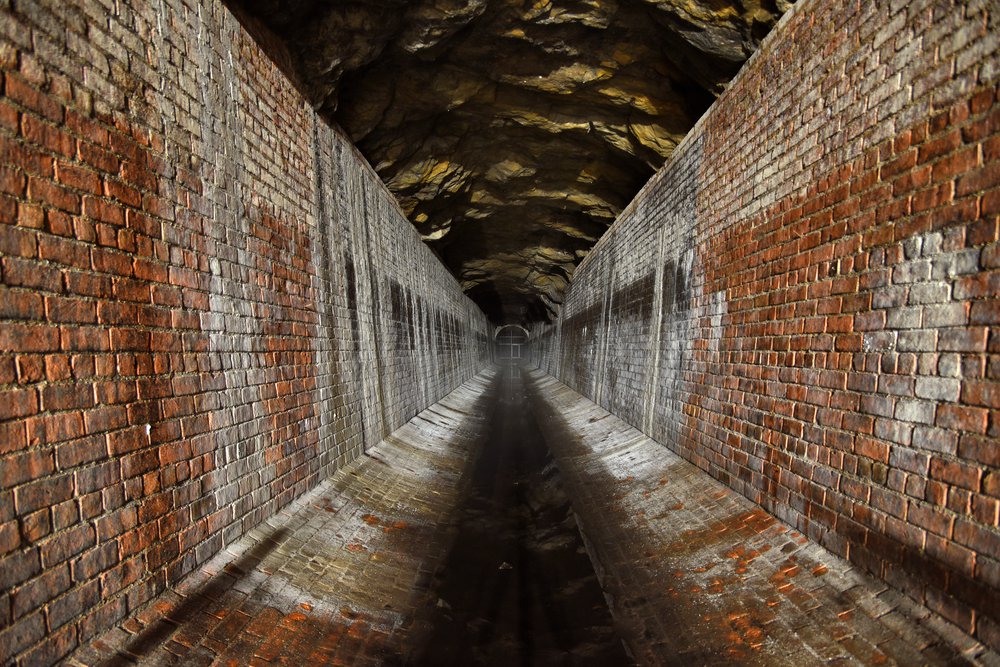
The creation of New York’s water tunnels has been ongoing since 1837 when workers broke ground on the Croton Aqueduct, a 41-mile channel that delivered clean water from the Croton Reservoir to Manhattan. New York’s population and footprint have only grown since then, requiring the sandhogs to create larger and longer water tunnels every few generations.
“Most people don’t even really know it’s going on. They have no idea,” said Dale Estus, a retired sandhog who dug several sections of City Tunnel No. 3 from 1972 to 2009. “What did I like about it? The sense of getting something done. Getting something accomplished. There’s some things that we did that would blow your mind.”
Estus was part of a team that carved out five and a half miles of the water tunnel underneath Brooklyn, labor that he describes as dirty, dangerous but necessary.
Brooklyn has some of the hardest rock you can ever imagine.
Dale Estus, a retired sandhog
“Brooklyn has some of the hardest rock you can ever imagine. Oh, Brooklyn is brutal,” said Estus. “In the Brooklyn section, I think some of our best [work] shifts were about 30 feet, and that was a really good shift, to go 30 feet. We had shifts where we hadn’t gone 10 feet.”
Over the last 184 years, this dangerous, unseen labor has killed or maimed hundreds of workers. Enormous tunnel boring machines aid today’s sandhogs, but they still employ many of the same methods as their grandfathers, often blasting their way through solid rock using hand drills and dynamite. Estus helped excavate shafts in Brooklyn and Manhattan, using dynamite to dig hundreds of feet into the earth.
Read More: Giant Tunnel Boring Machine Smashes Its Way Through Ongoing Aqueduct Repair
“Shafts are usually wet. There is usually water raining down on you, and they can be cold miserable places,” said Estus. “It is dangerous. There is no question it is… In the shafts, you always have the danger of something falling from the top. You have people working above you, and they have to be constantly vigilant that nothing gets away from them.”
Despite generations of hard labor and even harder sacrifices, City Tunnel No. 3 will probably not be completed by the current generation of sandhogs.
“This is how big it is: my father worked on it. I worked on it from 1978 and am still working for it today. My son has worked on it. And the way we are going, his sons are liable to work on it,” said Fitzsimmons, who compares City Tunnel No. 3 to the Roman aqueducts and the Russian subway systems. “You are talking about four generations, on one job.”

Shaft 17B-1 will be located in Long Island City, Queens. Several construction trailers are already on site. The lot was previously used by the Department of Transportation as a storage yard for old lamp posts, according to neighbors. It was home to a large warehouse and a feral cat colony with 30 felines, which mostly disappeared as workers cleared out the site.
Shaft 18B-1 will be located in Maspeth, Queens. There are no construction trailers yet, but it has been cleared out and fenced off. This triangular lot is bordered on two sides by the Long Island Railroad, while the third features auto body shops and a trucking company.
“When all this is online, we are going to go back and shut down water tunnel No. 2 and repair the whole thing,” said Fitzsimmons. The number of repairs needed in that tunnel is unknown.
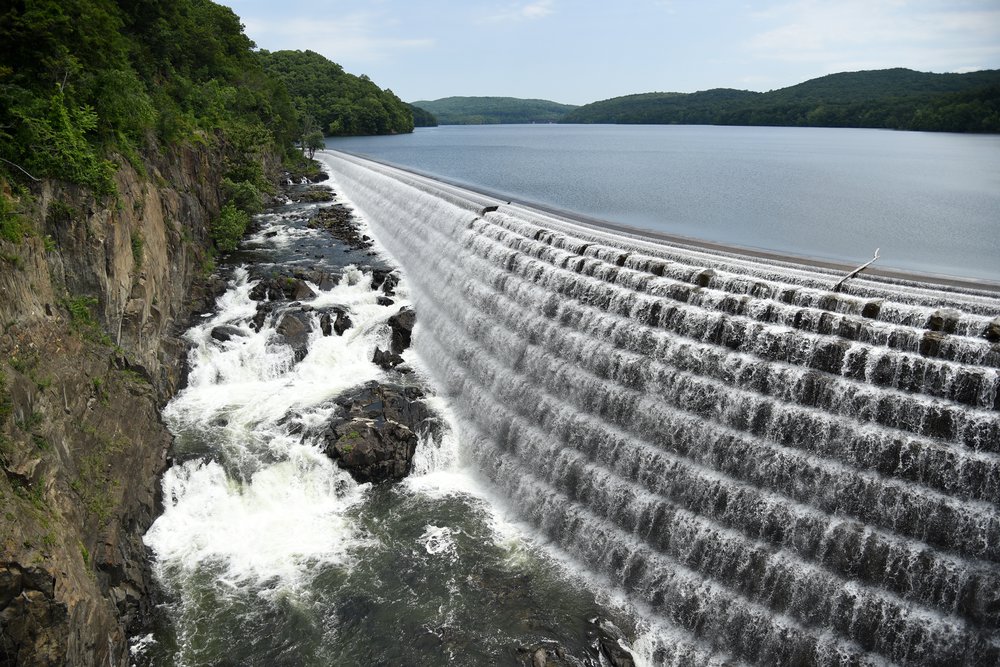
To The Last Drop
The New York City watershed has a history of frequent droughts dating back over the last 500 years, according to a 2013 paper published in the Journal of Climate. A 23-year megadrought once parched the region during the 1500s.
“These droughts might catch some people off guard,” said Dr. Neil Pederson, a Senior Ecologist at Harvard Forest who co-authored the paper. “But for those of us who think in longer time scales, it’s a natural part of the system.”
Still, New York City has faced at least nine periods of drought since 1939. The worst bout arrived in the 1960s, when the most severe drought in centuries led officials to declare a Federal disaster across New York, New Jersey, Connecticut and Pennsylvania. The situation became so dire that the city contemplated building nuclear-powered desalination plants. They would have generated just a few million gallons of emergency freshwater a day—far below the city’s demand. So while regional droughts aren’t unusual, their pace is projected to change.
It’s more common than it has been in our lifetimes.
Dr. Neil Pederson, Harvard Forest
“It’s more common than it has been in our lifetimes, in the Eastern United States,” Pederson said.
The last few decades can give us an idea of what might lay ahead, as human-made climate change increasingly impacts precipitation and temperatures in the region. During a 40-year period starting in the 1970s, the New York City watershed saw an unprecedented span of heavy rainfall, but it also experienced at least six water supply warnings and emergencies caused by minor droughts, a concerning sign that the system would not fare well during more severe or frequent droughts.
The New York City watershed is expected to see another wet spell in coming decades, with more rainfall and snowfall arriving during certain seasons, even as droughts may become more frequent and severe in others. The DEP has been making plans for this new climate reality.
“DEP has a team of scientists working on the largest climate change study of any U.S. water utility,” according to a statement from the agency. “There are detailed drought plans, including how the reservoirs are operated and how we communicate conservation measures with our customers. New York City is better positioned to withstand droughts now more than ever due to deliberate water conservation programs over the last 30 years that have seen daily water consumption drop by more than a third.”
These efforts are reflected by the city’s water consumption, which has dropped over time despite the population’s consistent growth. In 1979, New Yorkers used 1.5 billion gallons of water per day, but the daily mark had fallen to 981 million gallons by last year. It was the lowest rate of consumption since the 1950s, and its cause can be traced to decades of efforts by the DEP to create a more resilient, efficient water system. The agency has spent millions of dollars in repairs to leaking tunnels, programs to reduce water consumption by schools and city agencies and on the introduction of low-flow faucets, showers and toilets.
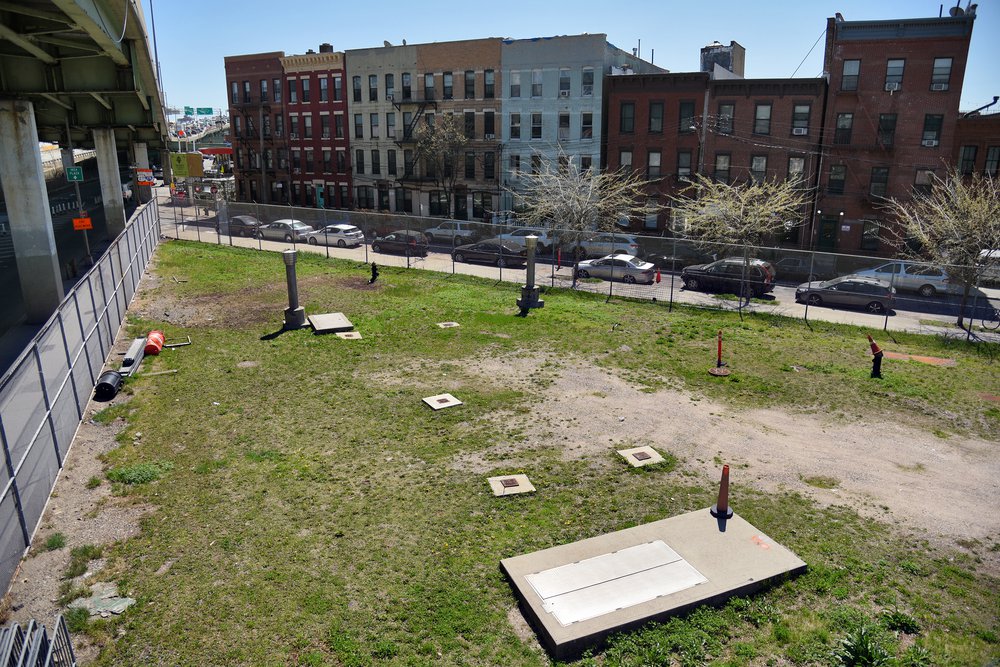
Once shafts 17B-1 and 18B-1 are online, regulators will inspect the Brooklyn and Queens sections of City Tunnel No. 3. Its water will be removed—its walls cleaned, repaired and sterilized before they can carry fresh drinking water to more than half of the city’s population. The inspection of City Tunnel No. 3 will end at Shaft 23B in Red Hook, Brooklyn, the final shaft on the tunnel’s route. Walsh Construction is currently preparing that site for work.
Even then, the years beyond will be uncertain.
“I was born at the tail end of the 1960s drought. I really can’t fathom what that was like, and I can’t fathom how we would do,” said Pederson. “When the six-year droughts come, which they will at some point, I can’t fathom how we will respond, other than that humans are creative and adaptable.”